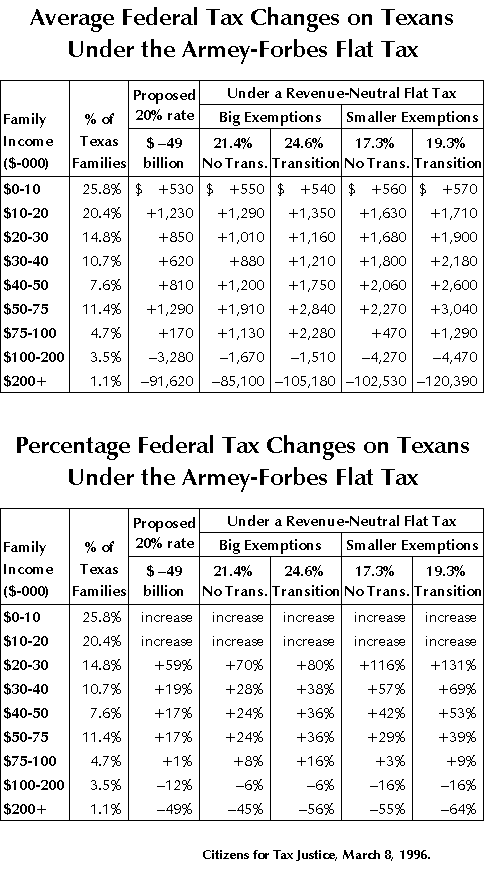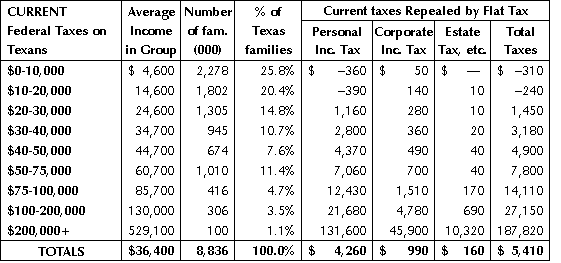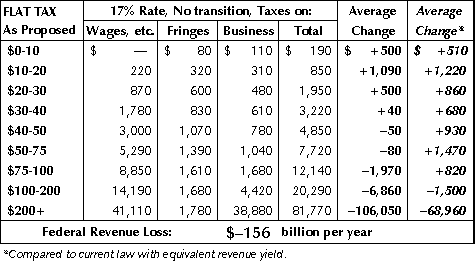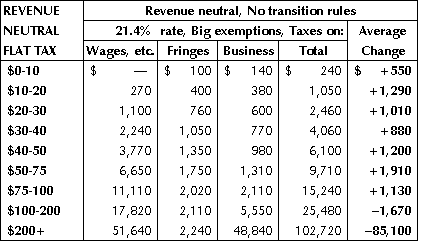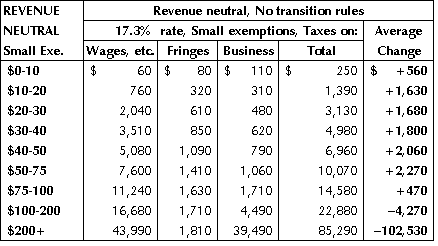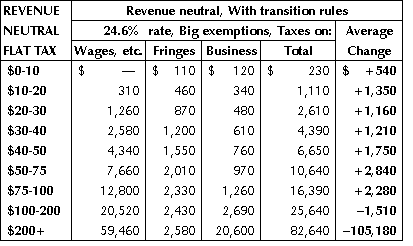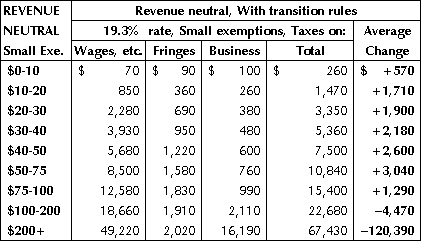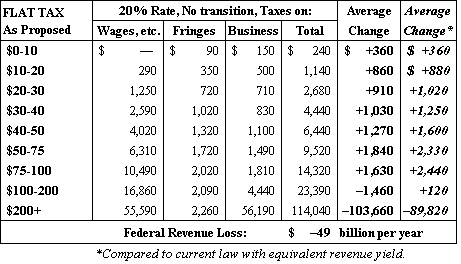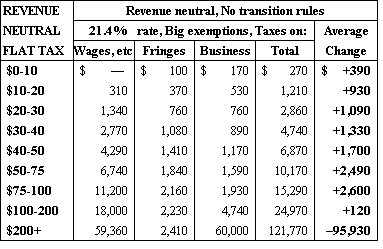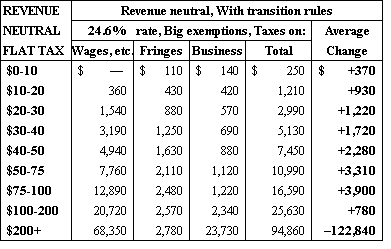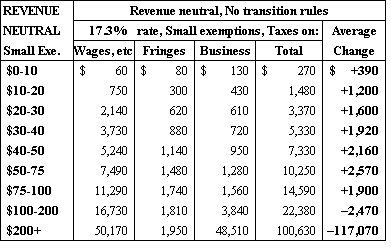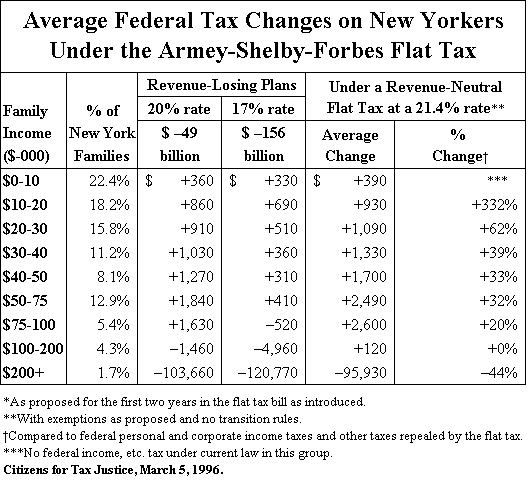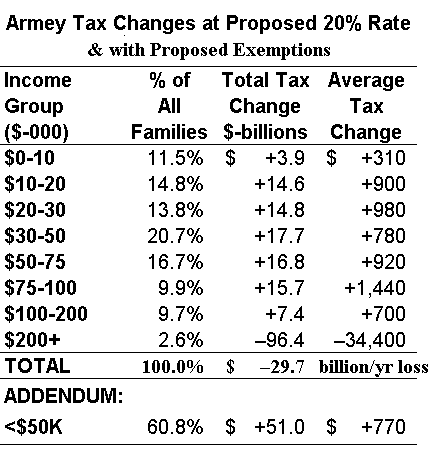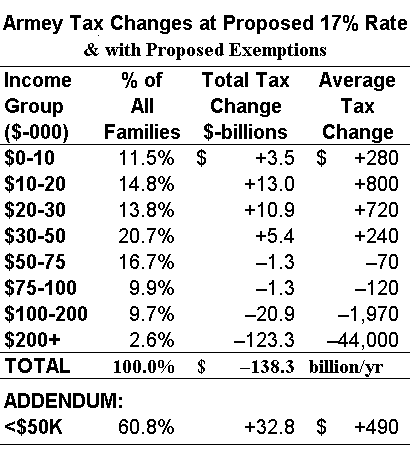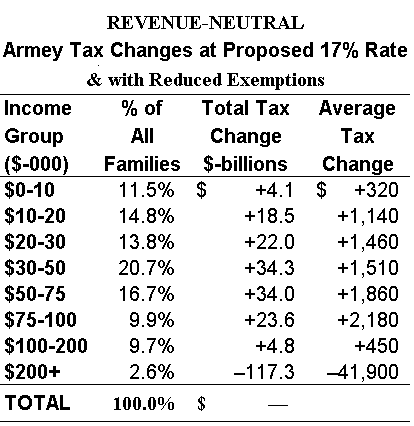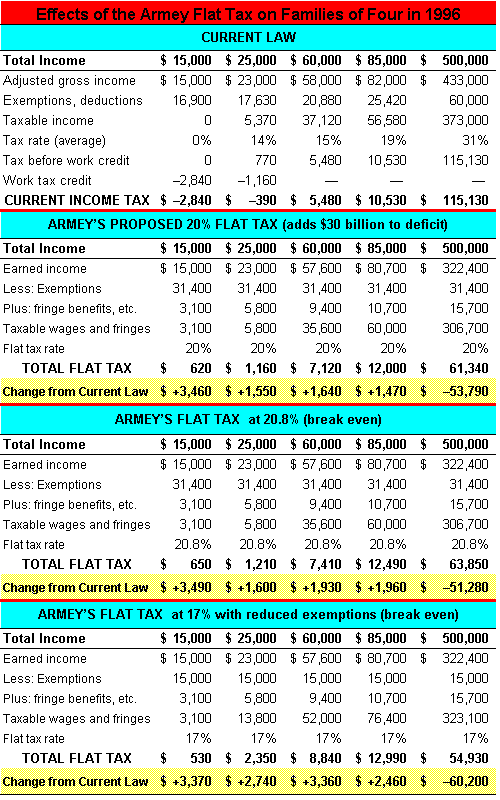July 23, 1996 04:37 PM | Permalink | 
July 23, 1996
Citizens for Tax Justice strongly supports legislation to limit current federal tax deferrals that subsidize the export of American jobs. Such reform legislation is embodied in S. 1355, Senator Byron Dorgan’s “American Jobs and Manufacturing Preservation Act.” Similar legislation has been approved by the House of Representative in the past. We urge the full Congress to pass S. 1355 and send it to the President to sign.
Tax Breaks for Exporting Jobs Should Be Eliminated–We Shouldn’t Pay Our Companies to Make Goods for the American Market in Foreign Countries
In its 1990 annual report, the Hewlett-Packard company noted: “As a result of certain employment and capital investment actions undertaken by the company, income from manufacturing activities in certain countries is subject to reduced tax rates, and in some cases is wholly exempt from taxes, for years through 2002.” In fact, said Hewlett-Packard’s report, “the income tax benefits attributable to the tax status of these subsidiaries are estimated to be $116 million, $88 million and $57 million for 1990, 1989 and 1988, respectively.”
This is not an isolated instance. An examination of 1990 corporate annual reports that we undertook a few years ago provided the following additional examples:(1)
- Baxter International noted that it has “manufacturing operations outside the U.S. which benefit from reductions in local tax rates under tax incentives that will continue at least through 1997.” Baxter said that its tax savings from these (and its Puerto Rican) operations totaled $200 million from 1988 to 1990.(2)
- Pfizer reported that the “[e]ffects of partially tax-exempt operations in Puerto Rico and reduced rates in Ireland” amounted to $125 million in tax savings in 1990, $106 million in 1989 and $95 million in 1988.
- Schering-Plough said that it “has subsidiaries in Puerto Rico and Ireland that manufacture products for distribution to both domestic and foreign markets. These subsidiaries operate under tax exemption grants and other incentives that expire at various dates through 2018.”
- Becton Dickinson reported $43 million in “tax reductions related to tax holidays in various countries” from 1988 to 1990.
- Beckman noted: “Certain income of subsidiaries operating in Puerto Rico and Ireland is taxed at substantially lower income tax rates,” worth more than $7 million a year to the company over the past two years.
- Abbott Laboratories pegged the value of “tax incentive grants related to subsidiaries in Puerto Rico and Ireland” at $82 million in 1990, $79 million in 1989 and $76 million in 1988.
- Merck & Co. noted that “earnings from manufacturing operations in Ireland [were] exempt from Irish taxes. The tax exemption expired in 1990; thereafter, Irish earnings will be taxed at an incentive rate of 10%.”
In fact, under current law, American companies often are taxed considerably less if they move their manufacturing operations to an overseas “tax haven” such as Singapore, Ireland or Taiwan, and then import their products back into the United States for sale.
How we subsidize the export of American jobs
The tax incentive for exporting American jobs results from current tax rules that:
1. allow companies to “defer” indefinitely U.S. taxes on unrepatriated profits earned by their foreign subsidiaries; and
2. allow companies to use foreign tax credits generated by taxes paid to non-tax-haven countries to offset the U.S. tax otherwise due on repatriated profits earned in low- or no-tax foreign tax havens.
S. 1355 would end this wrong-headed subsidy
Why should the United States tax code give companies a tax incentive to establish jobs and plants in tax-haven countries, rather than keeping or expanding their plants and jobs in the United States? Why should our tax code make tax breaks a factor in decisions by American companies about where to make the products they sell in the United States?
Why indeed? We believe that this tax break for overseas plants should be ended. Profits earned by American-owned companies from sales in the United States should be taxed–whether the products are Made in the USA or abroad.
S. 1355 would end the current tax break for exporting jobs–by taxing profits on goods that are manufactured by American companies in foreign tax havens and imported back into the United States. It would achieve this result by (1) imposing current tax on the “imported property income” of foreign subsidiaries of U.S. corporations; and (2) adding a new separate foreign tax credit limitation for imported property income earned by U.S. companies, either directly or through foreign subsidiaries.(3)
Legislation identical to S. 1355 was passed by the House in 1987. Unfortunately, at that time the reform provision was dropped in conference at the insistence of the Reagan administration.
Spurious arguments against curbing subsidies for exporting jobs
Of course, Congress has heard loud complaints from lobbyists for companies that benefit from the current tax breaks for exporting jobs. Some have apparently argued that their companies will be at a competitive disadvantage in foreign markets if this legislation were approved. But since the bill applies only to sales in U.S. markets, that argument makes no sense.
Lobbyists also have asserted that if American multinationals have to pay U.S. taxes on their profits from U.S. sales of foreign-made goods, they might be disadvantaged compared to foreign-owned companies selling products in the United States. Perhaps. But as the House concluded in 1987, it would be far better “to place U.S.-owned foreign enterprises who produce for the U.S. market on a par with similar or competing U.S. enterprises” rather than worrying about “placing them on a par with purely foreign enterprises.”(4)
Finally, lobbyists have made the spurious point that overall, foreign affiliates of U.S. companies have a negative trade balance with the United States, that is, they move more goods and services out of the United States than they export back in. To which, one might answer, so what?
After all, S. 1355 does not deal with all foreign affiliates of U.S. companies. Rather, it deals only with U.S.-controlled foreign subsidiaries that produce goods for the American market in tax-haven countries.(5) When U.S. companies shift what would otherwise be domestic production to these foreign subsidiaries it most certainly does not improve the U.S. trade balance; it hurts it.(6)
Conclusion
American companies may move jobs and plants to foreign locations in order to make goods for the U.S. market for many reasons–such as low wages or lack of regulation–that the tax code can do little about. But we should not provide an additional inducement for such American-job-losing moves through our income tax policy.
American multinationals should pay income taxes on their U.S.-related profits from foreign production. Such income should not be more favorably treated by our tax code than profits from producing goods here in the United States. We urge Congress to approve the provisions of S. 1355.
1. Several of the companies mentioned here apparently have been lobbying hard against S. 1355.
2. Many companies do not separate the tax savings from their Puerto Rican and foreign tax-haven activities in their annual reports.
3. “Imported property income means income . . . derived in connection with manufacturing, producing, growing, or extracting imported property; the sale, exchange, or other disposition of imported property; or the lease, rental, or licensing of imported property. For the purpose of the foreign tax credit limitation, income that is both imported property income and U.S. source income is treated as U.S. source income. Foreign taxes on that U.S. source imported property income are eligible for crediting against the U.S. tax on foreign source import[ed] property income. Imported property does not include any foreign oil and gas extraction income or any foreign oil-related income.
“The bill defines ‘imported property’ as property which is imported into the United States by the controlled foreign corporation or a related person.” House Committee on Ways and Means, “Report on Title X of the Omnibus Budget Reconciliation Act of 1987,” in House Committee on the Budget, Omnibus Budget Reconciliation Act of 1987, House Rpt. 100-391, 100th Cong., 1st Sess., Oct. 26, 1987, pp. 1103-04.
4. Id.
5 Companies that manufacture abroad in non-tax-haven countries generally would not be affected by the bill, since they still will get foreign tax credits for the foreign taxes they pay.
6. Foreign affiliates of U.S. companies that produce goods for foreign markets–not addressed by Senator Dorgan’s bill–may well have a negative trade balance with the United States, insofar as they transfer property from their domestic parent to be used in overseas manufacturing. But it would obviously be far better for the U.S. trade balance–and for American jobs–if those final products were manufactured completely in the United States and exported abroad, rather than having much of the manufacturing process occur overseas. To assert that foreign manufacturing operations by American companies helps the U.S. trade balance is to play games with statistics.
For example, suppose an American company was making $100 million in export goods in the U.S. for foreign markets. Now, suppose it moves the assembly portion of that manufacturing process overseas, where half the value of the final products is produced. At this point, instead of $100 million in exports, there are only $50 million. America has thus lost exports and jobs–even though the foreign affiliate itself has a negative trade balance with the United States. For better or worse, however, S. 1355, does not address this situation.
![]()

 at higher income levels (back to pre-1993 rules), his proposed expansion of Individual Retirement Accounts (including education accounts), his proposed reductions in the earned-income tax credit for low- and moderate-income working families (patterned after the congressional proposal vetoed last year) and Dole’s proposed $500-per-child credit. The last item is phased out between $75,000 and $110,000 in adjusted gross income, and according to the Dole campaign will generally be unavailable to low- and moderate-income working families receiving the earned-income tax credit (contrary to a previous Dole campaign assertion that the credit would be for “low- and middle-income families”).
at higher income levels (back to pre-1993 rules), his proposed expansion of Individual Retirement Accounts (including education accounts), his proposed reductions in the earned-income tax credit for low- and moderate-income working families (patterned after the congressional proposal vetoed last year) and Dole’s proposed $500-per-child credit. The last item is phased out between $75,000 and $110,000 in adjusted gross income, and according to the Dole campaign will generally be unavailable to low- and moderate-income working families receiving the earned-income tax credit (contrary to a previous Dole campaign assertion that the credit would be for “low- and middle-income families”).



